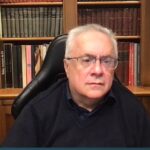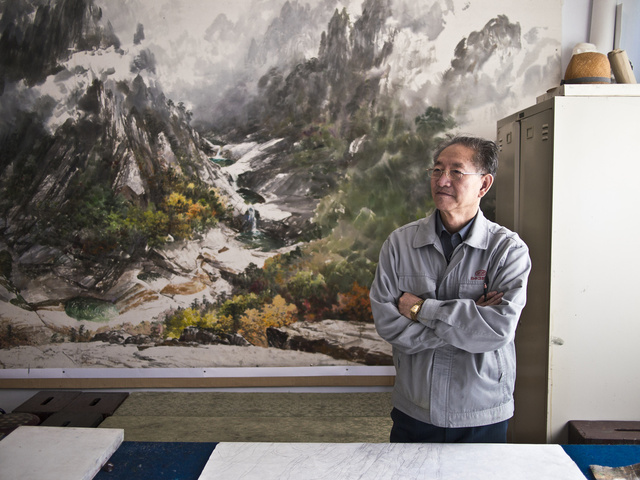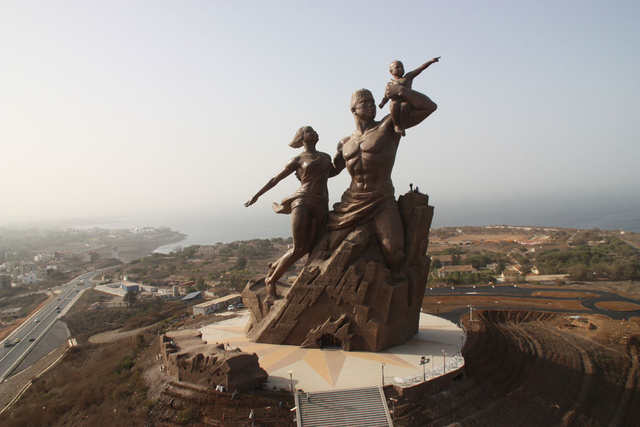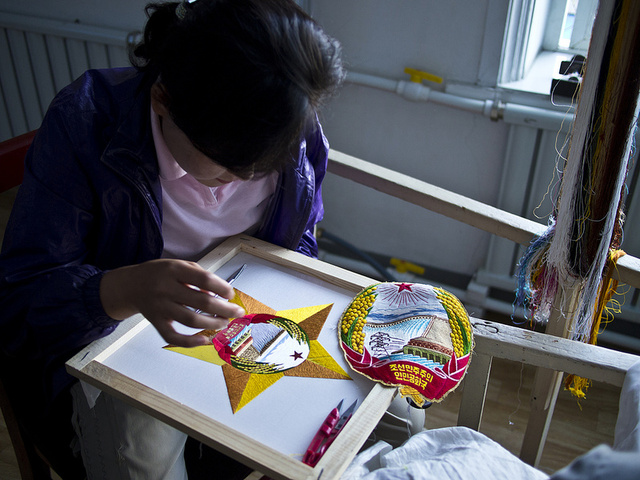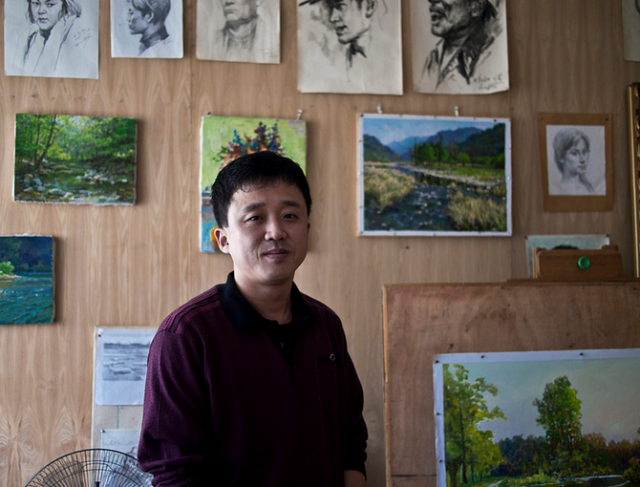A curiosa fábrica de monumentos Mansudae Art Studio, da Coréia do Norte.
Em 2005 a cidade de Frankfurt encomendou à esta fábricam, da Coréia do Norte, uma réplica da fonte “Fairy Tale Fountain“, de 1910, mas derretida durante a segunda guerra mundial para a confecção de armamentos. (https://de.wikipedia.org/wiki/Frankfurter_M%C3%A4rchenbrunnen).
A maior parte dos monumentos exportados foram para países da África e Ásia.
===================
Da Bloomberg
Mansudae Art Studio, North Korea’s Colossal Monument Factory
In November 2005, two Germans flew to North Korea on official business. Their goal was not to discuss nuclear disarmament or diplomatic relations. Rather, they went to check on the progress of a sculptural commission: the reconstruction of Frankfurt’s so-called Fairy Tale Fountain, an art nouveau relic from 1910 that had been melted down for its metal during World War II.
Blueprints for the original Fairy Tale Fountain had gone missing, and the City of Frankfurt needed sculptors who could work from old photographs to re-create the naked beauty gazing down on an array of cherubic children and enormous water-spewing reptiles and fish. For this intricate job, the Germans had turned to Pyongyang’s Mansudae Art Studio.
Perhaps the world’s biggest art factory, Mansudae employs roughly 4,000 North Koreans, including some 1,000 artists, handpicked from the country’s best academies. These favored few are the only artists officially sanctioned to portray the Kim family dynasty, and their primary task is to churn out propaganda paintings, murals, posters, billboards, and Soviet-style monuments deifying the country’s Great, Dear, and Supreme Leaders, also known as Kim Il Sung, Kim Jong Il, and Kim Jong Un. But Mansudae does more than just set the stage for North Korea’s self-celebration. The studio also runs a thriving multimillion-dollar side business: building statues, monuments, museums, sports stadiums, and at least one palace, for a long list of countries across the world, many of them in Africa.
Klaus Klemp, deputy director of Frankfurt’s Museum of Applied Art, discovered Mansudae back in 2004 and was impressed enough by the craftsmanship to convince Frankfurt officials to hire the atelier. “It was a purely technical decision,” he says. “The top tier artists in Germany simply don’t make realist work anymore. North Koreans on the other hand haven’t experienced the long evolution of modern art; they are kind of stuck in the early 1900s, which is exactly when this fountain was made.” North Korea’s price tag for reconstructing the ornate bronze fountain was also attractive: €200,000, including shipping and handling.
In Pyongyang, Ministry of Culture officials escorted Klemp and his colleague, Philipp Sturm, to an expansive, well-lit factory space hung with banners touting slogans like, “When the Party Gives Orders, We Execute!” and “Self-Sustenance Is the Only Path To Survival!” There, a full-size plaster model of the German fountain stood among other works-in-progress, including a 25-foot-tall white marble statue of North Korea’s first leader, and a smaller statue of three revolutionary heroes, one of them brandishing an enormous flag.
The quality of the work was impeccable, but the Germans did have one complaint: Their art nouveau fountain had been rendered with a slightly hard, angular communist touch. “The woman had kind of a cement block hairdo,” recalls Sturm. “It wasn’t anything that couldn’t be fixed. We explained to the head sculptor that the socialist realist style wasn’t really in vogue in Frankfurt at the moment. He was very receptive and softened the look accordingly.”
Mansudae Art Studio first expanded its repertoire to serve the interests of foreign countries in the 1970s, launching an international branch called Mansudae Overseas Project Group of Companies. Since then it has earned millions of dollars on projects built for countries including Algeria, Angola, Botswana, Benin, Cambodia, Chad, the Democratic Republic of the Congo, Egypt, Equatorial Guinea, Ethiopia, Malaysia, Mozambique, Madagascar, Namibia, Senegal, Syria, Togo, and Zimbabwe, according to Curtis Melvin, a researcher at the U.S.-Korea Institute at Johns Hopkins University. North Korean officials and Mansudae Art Studio did not respond to requests for comment sent via e-mail and faxed to North Korean embassies in several countries.
“They seem to have developed a small cottage industry,” says Marcus Noland, an expert on North Korea and director of studies at the Peterson Institute for International Economics. “The North Koreans are desperate for money, and my guess is that at some point they figured out that essentially exporting their capacity to make glorious monuments to great leaders was something they could do to both win friends and possibly influence people, but also possibly make money.”
Founded in 1959, six years after the Korean War, Mansudae has long defined—or at least produced—North Korea’s aesthetic. The impoverished country, in which 28 percent of children under 5 suffer from malnutrition, according to the United Nations, spends much of its budget on Kim family deification. According to a recent statement by North Korea’s Supreme People’s Assembly, “44.8 percent of the total state budgetary expenditure for the economic development and improvement of people’s living standard was used for funding the building of edifices to be presented to the 100th birth anniversary of President Kim Il Sung.” Much of this money likely funds Mansudae, which designs everything from the tiny “Kim pins” that North Koreans wear on their lapels to shrines like the 164-foot-tall Monument to the Founding of the Korean Workers Party—three truck-size fists raising high a hammer, a sickle, and a calligraphy brush.
Do Salon
North Korean factory offers propaganda art on the cheap
Pyongyang’s Mansudae employs 4,000 workers and appeals to governments hunting for inexpensive monuments
This re-creation of Frankfurt’s Fairy Tale Fountain was built at Mansudae Art Studio in North Korea. (via Wikipedia)(Credit: Wikipedia)This article originally appeared on Hyperallergic.
Here’s something you may not have known: there’s a massive art factory in North Korea that makes monuments, sculptures, statues museums, and more for at least a dozen countries around the world. In a fascinating story in Bloomberg Businessweek, writer Caroline Winter lays out the details — or at least those she can gather — of Mansudae Art Studio in Pyongyang, which takes up 30 acres, employs 4,000 people, 1,000 of them artists, and also includes a soccer stadium, paper mill, sauna, and kindergarten. Why does every story that comes out of North Korea seem somehow more bizarre than the last?
Senegal’s 164-foot-tall African Resistance Monument is another example of Mansudae’s handiwork. (click to enlarge) (via dorothy.voorhees on Flickr)
Among the international jobs the workers at Mansudae have completed are: a reconstruction of the Fairy Tale Fountain in Frankfurt, Germany; Senegal’s mammoth (164 feet tall) African Renaissance Monument; the Namibian State House; and the soon-to-open Grand Panorama Museum in Cambodia. The studio/factory is also responsible for North Korean state propaganda, which includes portraits, posters, and monuments celebrating country leaders Kim Il Sung, Kim Jong Il, and Kim Jong Un. But the existence of an art factory making propaganda for an autocratic government isn’t strange; it’s the international commissions that are hilarious and unexpected.
According to Winter, Germany is thus far the only Western democracy to have engaged the services of Mansudae. It did so in 2005, commissioning the fountain re-creation for €200,000 total ($264,480 today). Klaus Klemp, deputy director of Frankfurt’s Museum of Applied Art, told Winter, “The top tier artists in Germany simply don’t make realist work anymore. North Koreans on the other hand haven’t experienced the long evolution of modern art; they are kind of stuck in the early 1900s, which is exactly when this fountain was made.” And it went perfectly well, with the exception of a slight style issue: the North Korean sculpted the woman with “kind of a cement block hairdo,” in Klemp’s words — a little too Communist/socialist realist for 21st-century Germany.
Narcissistic leaders of a handful of African countries have also outsourced their projects to Mansudae, for which they’ve faced criticism at home. But you just can’t beat the price! Former Senegalese President Abdoulaye Wade apparently told the Wall Street Journal, “Only the North Koreans could build my statue. I had no money.”
Making the story even weirder is the fact that international sales of the studio’s smaller works are managed by an Italian man named Pier Luigi Cecioni. Its “official web-site abroad” is also run out of Italy and assures you that Mansudae “is not a sort of chain factory, like some Chinese and other Oriental centers, nor a school, but a very high quality art production center.” And although grandiose tributes to quasi-corrupt leaders with dictatorial tendencies appear to be Mansudae’s specialty, the artists there also excel at painting realistic street scenes and landscapes, many of them modeled on classical European predecessors.
Do Gizmodo
Por dentro da fábrica estatal norte-coreana que produz monumentos
Dentro do Estúdio de Arte de Mansudae, um armazém de 120.000 metros quadrados em Pyongyang, milhares de norte-coreanos trabalham para esculpir, pintar e serrar os monumentos que se tornaram sinônimo do país isolado. Mas cada vez mais estes artistas não estão fazendo arte apenas para a Coreia do Norte – eles estão fazendo para outros países, que pagam milhões por seus monumentos e esculturas meticulosamente detalhados.
Um relato fascinante da Bloomberg nos dá uma ideia das atividades em Mansudae, que é chamado de “maior fábrica de arte do mundo.” Ela empresa 1.000 artistas, escolhidos de escolas ao redor da Coreia do Norte, e divide em 13 departamentos que lidam com medidas especificas – desde pintura de cenários a monumentos.
De acordo com um artigo diferente do Instituto de Política Econômica Internacional de Seul (citado pelo ArtsAsiaPacific), a Coreia do Norte gasta cerca de 40% do orçamento em “divinização da família Kim” artística, o que explica como surgiu originalmente Mansudae. Mas o estúdio, que supostamente pertence à irmã de Kim Jung Il, Kim Kyong Hui, também está se tornando uma fonte importante de receita de projetos de fora do país. Por exemplo, o Monumento do Renascimento Africana de Senegal foi construído por artistas de Mansudae por cerca de US$ 70 milhões em 2010. Também existem projetos internos, como uma recente recriação de uma fonte Art Nouveau, destruída durante a Segunda Guerra Mundial, para um grupo de oficiais da Alemanha (que, de acordo com a Bloomberg, colocaram fotos de crianças alemãs na escultura para ela não parecer coreana). Itália, Camboja e outros países já pediram trabalhos a Mansudae, também.
Estes pedidos internacionais tornaram Mansudae um dos poucos modos como norte-coreanos viajam pelo mundo. Para completar grandes projetos, como a estatua do Senegal, artistas viveram em dormitórios controlados pelo governo, como explicou Carolina Winter:
De acordo com relatos da imprensa na África e no Camboja, os trabalhadores de Mansudae enviados para outros países viveram sob vigilância. Noland, do Instituto Peterson, suspeita que eles são tratados como qualquer outro norte-coreano. “Eles estão vivendo em um dormitório onde existe uma secretária e segurança, existem meios de mantê-los na linha”, ele explica.
De certa forma, a história da arte moderna é responsável pela explosão no negócio de Mansudae. Desde que o país foi fechado para a agitação massiva que afetou o mundo da arte no fim do século XX, estes artistas ainda são treinados com técnicas clássicas, que há muito foram deixadas de lado em outros países. E isso explica porque a fábrica de arte também produz muitas imitações históricas, também.
Imagem via Marcelo Druck/Flickr
Imagem do Monumento do Renascimento Africano de Senegal via ArtAsiaPacific
Imagem via Marcelo Druck/Flickr
Imagem via Marcelo Druck/Flickr
Imagem de topo via John Pavelka on Flickr.
Você pode fazer o Jornal GGN ser cada vez melhor.
Apoie e faça parte desta caminhada para que ele se torne um veículo cada vez mais respeitado e forte.



 produtos
produtos

